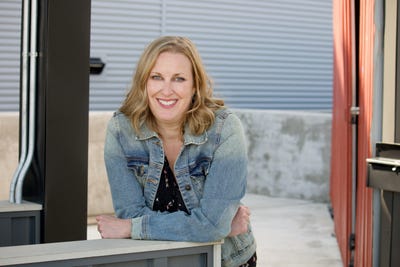New teaching/test kitchen creates opportunities
With 12 burners, six work stations, two ovens, four television monitors and more, Indiana University’s test kitchen will serve as a space to learn for dining staff and students, with plans to branch out further into the community.
The teaching kitchen at Indiana University (IU), new this semester, shiny with the latest equipment and room to learn in a classroom-like setting, will serve as a resource for several groups.
From the perspective of Rahul Shrivastav, executive director of IU Dining, this space will allow campus cooks to get training before they hit the floor. The kitchen will also be a place to test new recipes and techniques. And Shrivastav says he can’t wait to revisit the tens of thousands of recipes in the IU Dining database.
The many recipes used by the dining team are designed to be clear, but “there are intricacies within the recipes,” Shrivastav explains. “You sauté the onion, but for how long? And what colors in the onion are you waiting for? Skills like that are usually taught on the fly, but I like to train my staff before they’re out on the floor.”

GET EQUIPPED: The teaching kitchen is attached to an existing kitchen at the Read residence hall, but the only equipment shared is a dish machine.
But this kitchen will also be the place where the dining department forges strong ties with different academic departments.
For the academic perspective, the idea of a teaching kitchen had been around for years, shepherded by Carl Ipsen, professor of history and director of the IU Food Institute. College courses like geography and anthropology can definitely benefit from eating the real food they’re learning about and how it relates to the culture they’re studying. There’s a food-centric curriculum at IU, so the IU Food Institute is perfectly poised for a teaching kitchen and is starting use of it this semester.
Ipsen told the IU campus newspaper that food and food systems affect lots of issues in the world, from the obesity epidemic to labor issues and climate change.
“If you’re concerned about the environment, then what’s going on in the food world is a big chunk of that,” Ipsen said in the article.

COLLABORATION: “It’s very important that I train my staff because the students here have diverse palates and want food from around the globe,” says Rahul Shrivastav (center) of IU Dining. “But also, we’re fostering a good relationship with the academic side. We’re here as the food experts, and we want to make sure we can assist in any way.”
Shrivastav says the dining department will be very hands-on, helping the academic classes. And as a bonus, he’s recognizing how dining professionals can contribute to the real-world education of students at the university.
“One of the geography classes was learning about the movement of food and the logistics…how does Sysco or US Foods move their food around, and map it out? Well, I work with these distributors all the time and can contribute what I’ve learned,” Shrivastav says.
And in turn, when an anthropology class teaches about food culture, the dining department can’t help but get new menu ideas.
“That’s what trends are,” Shrivastav says. “History repeats itself.”

And looking to the future, and the issue of food insecurity close to home, Shrivastav says he plans to see how the food pantry can be incorporated into the kitchen as well, perhaps with cooking classes for those receiving the food.
About the Author
You May Also Like






